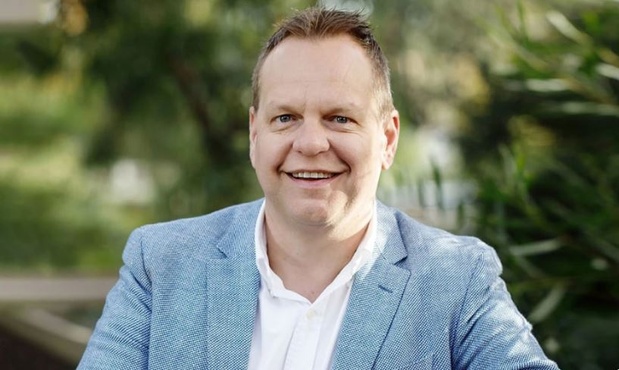We spoke with Grift about the mental traps that can stand in the way of progress – and how educators can draw on self-awareness to change their middle leadership experience for the better.
Hi Gavin, you’ve worked extensively in the school leadership space, and your latest book Emerge looks at the most common challenges faced by middle leaders – why is middle leadership an area of particular interest to you?
[It’s personal], because after having been a teacher and a leader in schools, of which most of that was middle leadership over a long period of time, I just wanted to write something that I wished I had to help me in all those years in middle leadership, because it’s such an important position.
And it can be quite a confusing time for many leaders, because your identity is shifting, you’re going from a classroom teacher to a leader, but you’re not an executive leader – until you become one.
People’s perception of you can change, your responsibilities increase, but you still have got teaching responsibilities, in general.
So, from a personal level I wanted to give people an insight and some benefits from what I discovered being a middle leader, as well as what I’ve discovered in the last 15 years of working with middle leaders.
You talk in the book about some common mental barriers to leadership that a lot of middle leaders face. What are the key ones?
I think that goes to the other reason I wrote it, which was about the research, I guess, as well as my personal experiences, in identifying some pretty common pain points around middle leadership,
So, just working in contexts where you find some people difficult, and you’re not sure how to work with them, but you have to work with them.
That’s really common, and it’s important to develop some thinking about how to work with people in those formative years of leadership that set you up for success moving up through your leadership journey.
Another one is overcoming that need to be liked, I call it the ‘pleaser’. So, there’s a difference between needing to be liked and wanting to be liked. And when we go through leadership, finding ways to help people work towards the ‘I need to be’ rather than ‘I want to be’ is important.
Because once you realise that ... [you can be] more confident in the ways that you deal with different people.
So that is a fine line, but it is a tension for many and particularly for middle leadership, because of the reasons we just talked about.
Building educators’ emotional intelligence seems to be a big part of what you do, what does this involve and why is it critical?
It’s basically learning how to understand yourself better, in some ways it’s learning how to take a more objective look at yourself.
And in particular, some of your motivations and your mental state: what you think, what you feel, what you actually do – just pausing and saying, ‘is this serving me best, is this serving my role best?’
It’s quintessentially self-awareness, which is an important component to emotional intelligence.
It’s helping people to focus and develop and practice self-awareness in a way that supports them to develop their leadership identities in ways that both benefit them and benefit others…

You also look at helping people to understand the blind spots that hinder their success. What are some common blind spots and how can middle leaders actually identify their own?
I talk about four different biases, one is that they might form their opinions about a situation or person that’s based on their own wishes, beliefs, and prejudices, rather than being objective.
So basically, we seek people out that will confirm our view of the world. And so that can create a blind spot, because it means we’re not getting to know other people who [we can get] value from leaning into what they might think differently on.
Another one is a tendency to associate with those who share similar interests, experiences and backgrounds … that can create a blindspot when you’re working with other people.
The two others that I really talk more about in the book, which can help overcome the need to be liked, is seeking to make sense of or criticise other people’s behaviour based on previous observations, which is ‘because I’ve judged somebody, therefore, I have a bias about anything they might say or bring, because I’ve labelled them and become the judge and the jury, and therefore I’m blind to any value or any merits they might bring’.
The last one is performative bias, which is quite common: we tend to behave similarly to others, regardless of our own unique views or idiosyncrasies.
There’s a whole lot of work out there around different biases that exists.
At the end of the day, it’s trying to help people see you’re a product of your own conditioning, and how can you become more aware of that so you can utilise it more, in a really productive way, in a non-judgmental way, to help you in leadership.
It’s always ‘people before process’: we lead people, and no matter what program or process or whatever we’re leading out on, we have to find the best ways we’re going to take the people with us through those processes.
When you think about a highly successful middle leader, what attributes do they have?
Well, I think there’s a real blend and they lead with humility, but also self-assuredness.They can model behaviours that support them to navigate challenges effectively, confidently, and respectfully.
They build boundaries for themselves, as well as with others. They’re very purposeful in the way in which they go about their business.
They differentiate the needs that different people have that they work with, by getting to know everybody, not just those that are most like them.
And they've got a real flexibility and passion for finding out and being curious, which lends itself well for working with executive teams and colleagues that work alongside of them, plus those that work below them in the food chain, as well as students.
And that requires a high level of flexibility, when you’re able to not only understand [yourself] in different contexts, but also can see things through other people’s perceptions or perspectives and not personalise that to some degree.
They’re all catalysts for collaboration, they’re able to bring everybody together towards a common mission, common cause and common purpose in the areas that they’re responsible for, which sets them up really well for future leadership work in our profession.
Do you think middle leaders have enough professional development opportunities and professional support to help them excel?
Not really, and that’s not just me saying that, the research is saying it ... as a system we lack some of the professional learning support to provide them with this kind of work.
More than ever before schools are being asked to cultivate more collaborative cultures and become more collaborative in their approaches, which has meant more and more has been asked of middle leaders.
So that, combined with the fact that we’re having less experienced people apply for leadership positions through all the challenges associated particularly with the pandemic, has created this situation where they probably don’t have as much support as I’d like to think that they have.
Is there anything else that you’d like to mention?
I think this is a really important space, we need to spend more time in because if we can support and continue to build the capacity of our middle leaders, what we’re doing is future-proofing our profession and education.
This is something that, regardless of what stake you have in education, is important for us to consider.














